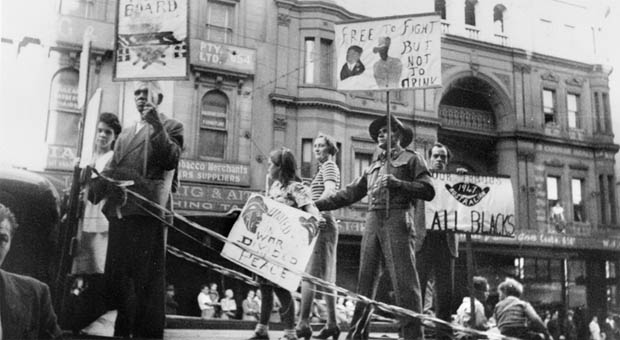
Civil Rights

Leila Lord, Tasman Dotti, and ex-soldier and Aboriginal activist Herbert Groves wearing his Second World War uniform as protest on the Australian Aboriginal League float in the 1947 May Day procession (photograph courtesy Australian War Memorial - P01248.001)
mawa – grasp – to take hold / walama – return or come back
There was a growing political activism within Sydney’s Aboriginal community over the 20th century, which led to the development of facilities and institutions for urban Aboriginal people. While Redfern was a particular focus for activism around civil and land rights, and a number of organisations integral to self-determination were established here, but there are also sites all over Sydney of political significance to Aboriginal people.


Koiki: the Mabo star

Apology To The Stolen Generations

Aborigines Protection Board Office

Speakers’ Corner at The Domain

Mrs Macquarie’s Chair

Reconciliation Park

NYE Welcome to Country illuminations

Recognising military service

Douglas Grant

Military service and Aboriginal voices

Bert Groves

Aboriginal organisations in Sydney

Significant Aboriginal people in Sydney

Jack Patten

Significant Aboriginal events in Sydney

Government policy in relation to Aboriginal people

Charles ‘Chicka’ Dixon

Charles Perkins

Aboriginal involvement with the church

Foundation for Aboriginal Affairs

Redfern Park

Land Rights

Freedom Ride

Boot Trade Union Hall

Aboriginal Medical Service

Aboriginal Legal Service

St David’s Hall

Burlington Hotel

Aboriginal Housing Company

NAIDOC Week in Sydney

Australian Hall

Aborigines Welfare Board

